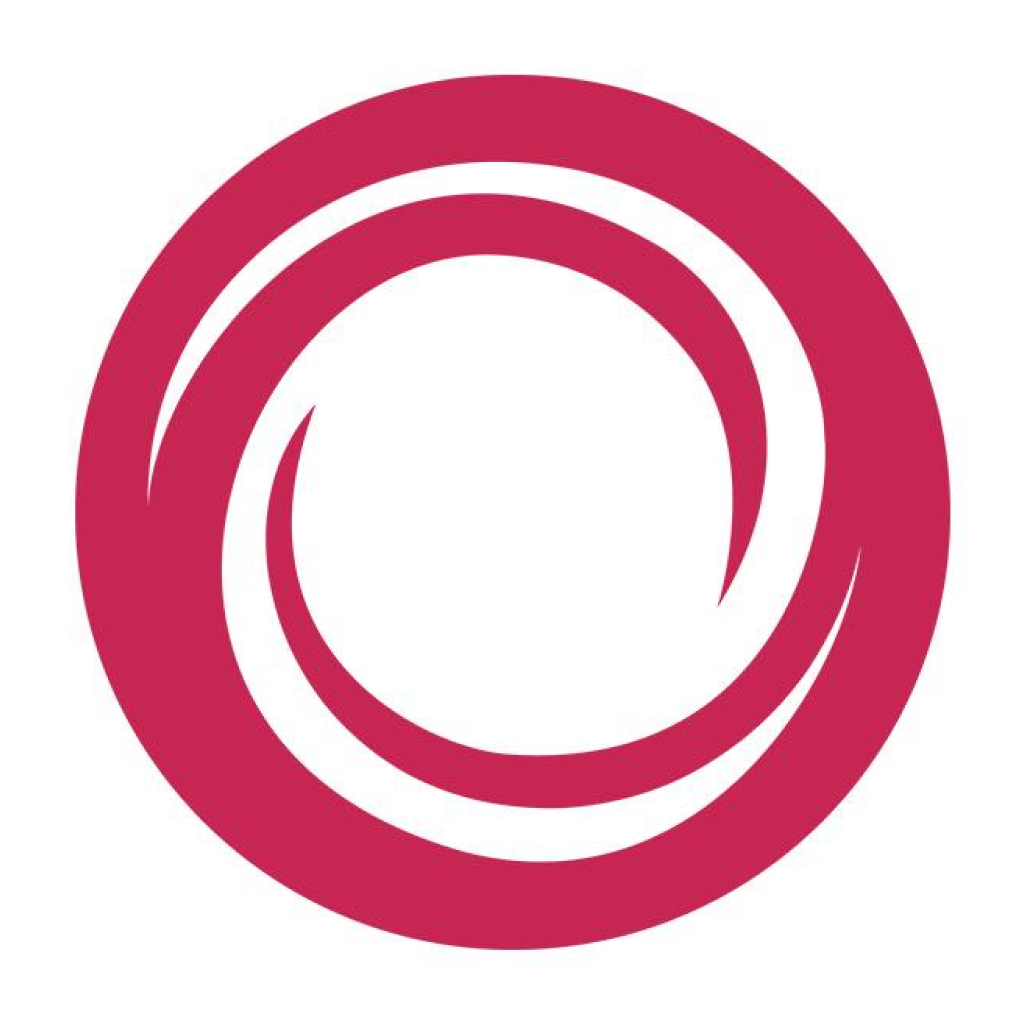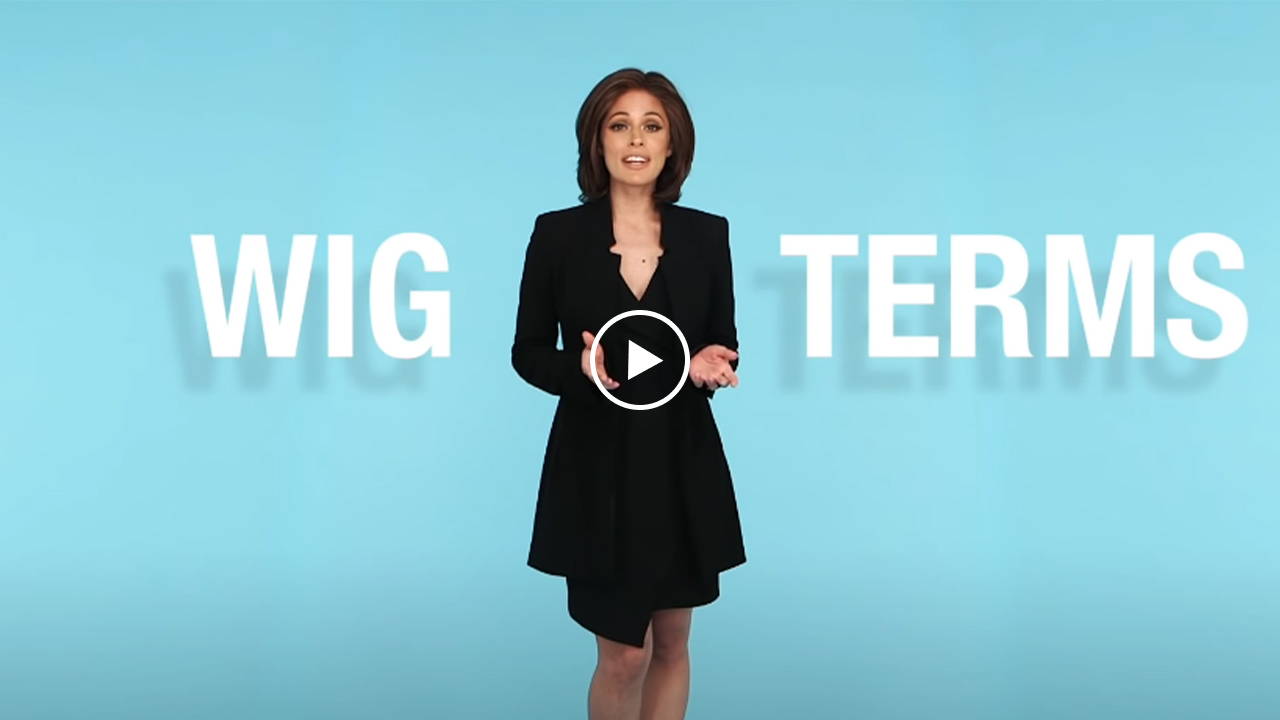Wig Terms and What They Mean: A Comprehensive Glossary
December 13th, 2023
Guide Sections
Learning Wig Terms: Parts of a Wig
Wig - A head covering that is made with either human hair or synthetic hair to help conceal hair loss or to make a fashion statement. Wigs come in a variety of styles, colors, and textures, just like bio hair.
Cap - A cap is the base material and foundation for your wig. They add structure and contour to the shape of your head for a secure fit. Most caps are constructed from wefts or rows of hair sewn or hand-tied into the material.
Cap Construction - Cap construction is how the cap is designed based on material and tying technique. A cap can be constructed in a variety of ways. Some caps are made with monofilament, which is a thin, sheer mesh material that helps match the color of the scalp for a natural look. Others can be hand tied, which is where the hair is individually knotted into the cap. A basic cap is where wefts of hair are sewn into a closed lace layer at the crown of the cap. The hair is then pre-teased at the root to help hide the cap and gives the hair volume.
Open Cap/Wefted - An open cap/wefted is a method of cap construction. You may also see such a wig listed as a capless wig or a basic cap construction. In an open cap, the wefts of hair are sewn into the piece so that there is space in between them, creating a lesser density wig.
Mono or Monofilament - A monofilament is a fine mesh fabric that is incorporated into a wig cap's construction. The transparency of the mesh allows the color of your own scalp to show through the fibers tied to the top of the wig. This feature makes a wig look more natural.
Weft- A weft is a single curtain of hair that, if multiple are sewn together, can be used to quickly construct a wig at a lower cost than a 100% hand tied piece. The easiest way to visualize a weft is to consider extensions. In a normal extensions kit, you receive multiple wefts. Sewing these small curtains together can make wigs more affordable than their hand-tied counterparts.
Lace Front- A lace front on a wig is a thin, very sheer lace material to which hairs are individually tied into the material. This gives the illusion of hairs growing from your scalp and creates the appearance of a natural hairline.
Full Lace -A full lace front is where there is a wide, sheer lace panel across the front of the cap. (A full lace requires customization, as this is not a ready-to-wear lace front. We recommend taking the piece to a salon professional to customize the full lace front).
Ear Tabs - An ear tab is a feature of a wig that lays in front of the ear and rests near the temple. Ear tabs are used to adjust the placement of your wig and can help you ensure a secure fit. For a more natural look, ensure your tabs are tucked in and not winging outward.
Nape - The nape is the area of the wig that lays on the back of your neck.
Parting Space - A parting space is the area on the wig where the hair can be parted. This feature allows you to have various options for natural parting.
Learning Wig Terms: Different Hair Fibers
Hair Fiber - Hair fiber is the material from which wig hair is made.
Human Hair - Human hair wigs are made with real human hair and are some of the highest in quality and offer a natural looking style and soft feel.
Remy Hair - This term describes the way human hair was collected for a wig. If a wig is designated as Remy, that means 100% of the human hair in the wig was collected in such a way that all the cuticles of the hair fiber are all facing the same direction. This may sound insignificant, but Remy is the highest quality. The fibers all facing the same direction create a soft and luxurious feel. Plus, it’s less likely to tangle.
Synthetic Hair - Synthetic hair wigs are made from high quality synthetic fibers that mimic the appearance of bio hair.
Heat Friendly Synthetic Fiber - Heat friendly synthetic fiber is lightweight but sturdy and retains its color vibrancy. The fibers can withstand the heat from heat tools up to 275° Fahrenheit, allowing you to straighten or curl your hair.
Synthetic Hair Blend - Synthetic hair blend is a mix of synthetic fibers blended with human hair, allowing for versatile styling options. Synthetic Hair Blend fiber moves and feels like human hair but is more lightweight and vibrant in color like synthetic.
Hair Texture - Hair texture refers to the pattern and feel of wig hair. The texture of the hair can be straight, wavy, curly, or kinky.
Baby Hair - Baby hair refers to the short, fine hairs along the wig’s hairline to enhance its natural look.
Returns - Shorter hairs tied throughout a wig to represent the natural look of flyaways or to lessen the density of the underside of a wig. Do not confuse returns with breakage or damage!
Fringe - Fringe is just another word for bangs. More specifically, a fringe is the area of hair that hangs over the forehead. From straight-across to side-swept, bangs are something we’re all familiar with.
Permatease - A permatease is a layer of densely compact hair with a teased look. This helps add body and volume to a wig with a basic cap. It can also conceal the wefts of basic cap wigs.
Learning Wig Terms: What Keeps a Wig Securely In Place
Wig Grip - A wig grip is a band or material that keeps the wig securely on the head. Most wig grips help prevent slipping and reduce the risk of pressure tension headaches.
Wig Tape and Adhesives - Wig tape and adhesives are products that you can use to attach your wig to your scalp. Wig tape is special tape that helps secure the wig to your scalp. Wig adhesive uses a special formula that safely adheres the wig to your skin.
Learning Wig Terms: Units of Measurement and Color
Denier - A denier is a unit of measurement that determines the thickness of a single strand of hair. A higher denier means heavier hair. For example, Asian human hair has more denier than European human hair.
Density - Density refers to how closely strands of hair are sewn together. It also describes the quantity of strands in a single wig. This may be easily confused with the term “denier” mentioned above.
Wig Length - Wig length is the measurement of how long the wig’s hair is. Wig styles can range from short to long styles, such as bobs, pixies, shags, and long hair.
Swatch - You have probably compared paint swatches once or twice in your lifetime. A swatch in terms of wigs is similar. It’s a sample image of what color the wig will be. On our site, you will either see a full photo featuring the wig color or just a small square showing a close up of the shade.
Learning Wig Terms: Other Terms You May See
Piecey - Piecey is a term that describes the style of a wig. Specifically, this is when the fibers are grouped together and slightly separated to create a style with a textured or tousled effect. Basically, it’s your “I woke up like this” look.
Customization - Customization is adjustments made to the wig for a personalized look.
Trimming is where you cut and adjust the length of the wig.
Thinning is where you can adjust the density of your wig by using thinning shears or razor.
Styling is however you wear your hair, such as parting the hair, straightening/curling, or putting it up in a ponytail, clip, or bun.
(If you ever plan on customizing your wig, we recommend taking your wig to a stylist).






